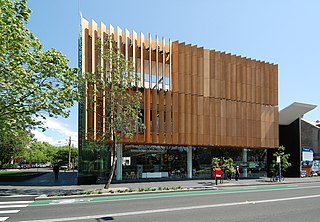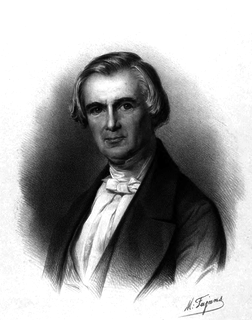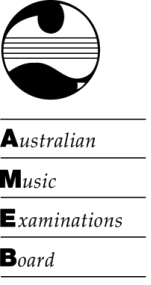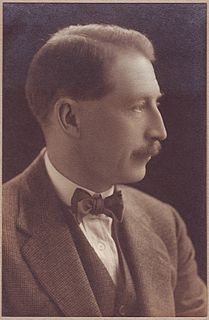
Cyril Farnsworth Monk (9 March 1882 – 7 March 1970) was an Australian violinist and academic.

Cyril Farnsworth Monk (9 March 1882 – 7 March 1970) was an Australian violinist and academic.
Monk was born in Surry Hills, Sydney in 1882, son of James Monk, a grocer, and wife Rosa née Bullen. He began playing the piano aged four, taught by his mother; from age nine he studied the violin with Samuel Chudleigh, secretary of the London College of Music. Later he studied the violin more intensively with Josef Kretschmann (who had been a pupil of Karol Lipiński and Ferdinand David), and music theory and composition with Alfred Hill. [1] [2] [3]

Surry Hills is an inner city, eastern suburb of Sydney, in the state of New South Wales, Australia. Surry Hills is immediately south-east of the Sydney central business district in the local government area of the City of Sydney. Surry Hills is surrounded by the suburbs of Darlinghurst to the north, Chippendale and Haymarket to the west, Moore Park and Paddington to the east and Redfern to the south.

Karol Józef Lipiński was a Polish music composer and virtuoso violinist active during the partitions of Poland. The Karol Lipiński University of Music in Wrocław, Poland is named after him.

Ferdinand David was a German virtuoso violinist and composer.
In September 1904 he went to London and studied with Guido Papini at the College of Violinists. During his time in Europe, he heard many notable violinists of the day and had transcriptions and compositions published. In 1906 he passed the college's exams with distinction and received a gold medal. [1] [2]
Guido Papini was an Italian violinist, composer and teacher. During his career he lived in London and Dublin.
Monk returned to Australia, and was engaged by Alfred Hill as a soloist with the orchestral concerts at the International Exhibition of 1906 in Christchurch, New Zealand. During the next year, he toured New Zealand with the orchestra. [1] [2]

The New Zealand International Exhibition opened on 1 November 1906 in Hagley Park, Christchurch, New Zealand. Nearly two million people visited the exhibition during the next few months. A 90 chains (1,800 m) branch railway line was built in late 1905 across North Hagley Park starting at the Riccarton station to service the exhibition and a temporary tram line was built in Peterborough Street, Park Terrace and Salisbury Street to connect with the Victoria Street tram. The attractions included New Zealand's first professional symphony orchestra, and the first Dominion pipe band contest, which was won by the Dunedin Highland Pipe Band.
In 1910 he formed the Austral String Quartet in Sydney, Alfred Hill sometimes being a member; the quartet introduced recent works to Australia. [1] [4]
Austral String Quartet was a string quartet ensemble based in Sydney active from 1910 to 1916.
On 22 December 1913, in Sydney, Monk married Isabel Varney Desmond Peterson (1892–1967), a pianist and composer known professionally as Varney Monk. [1]
Varney Monk, born as Isabel Varney Desmond Peterson, was an Australian pianist and composer, best known for writing the musicals Collits' Inn (1933) and The Cedar Tree (1934). During her career she wrote over 150 songs. She was the wife of Australian violinist Cyril Monk, whom she married in 1913.
In 1916 the New South Wales State Conservatorium of Music was founded in Sydney, and Monk was appointed a member of staff. He was leader the orchestra there, known as the New South Wales State Orchestra (the first full-time orchestra in Australia). He was an examiner for the Australian Music Examinations Board, and published educational compositions and arrangements for the violin. The Austral String Quartet was disbanded when Henri Verbrugghen, director of the Conservatorium, formed a quartet; Monk continued to give annual recitals. The last recital was in 1927. He was known for his interest in promoting recent music from Europe, and Australian compositions. [1] [4]

The Australian Music Examinations Board (AMEB) is a federated, privately funded corporation which provides a program of examinations for music, speech and drama in Australia.

Henri Adrien Marie Verbrugghen was a Belgian musician, who directed orchestras in England, Scotland, Australia and the United States.
Monk retired from the Conservatorium in 1955. He died in Sydney on 7 March 1970, survived by a son and daughter. [1]
The Aeolian Quartet was a highly reputed string quartet based in London (UK), with a long international touring history and presence, an important recording and broadcasting profile. It was the successor of the pre-War Stratton Quartet. The quartet adopted its new name in the late 1940s and disbanded in 1981.

Alfred Francis Hill CMG OBE was an Australian/New Zealand composer, conductor and teacher.

Robert Nathaniel Mann was a violinist, composer, conductor, and founding member of the Juilliard String Quartet, as well as a faculty member at the Manhattan School of Music. Mann, the first violinist at Juilliard, served on the school's string quartet for over fifty years until his retirement in 1997.
Stjepan Šulek was a Croatian composer, conductor, violinist and music teacher.

Tania Davis is the first violinist of the British/Australian classical crossover string quartet bond. Originally the violist of the quartet, she became the first violinist of the group in 2008 when its original first violinist Haylie Ecker left the group. Elspeth Hanson subsequently joined the group in 2008 as the violist. Davis was educated at SCEGGS Darlinghurst in Sydney before acquiring a first-class Bachelor of Music honors degree from the Sydney Conservatorium of Music and then moving on to gain a postgraduate diploma in performance with distinction from the Guildhall School of Music and Drama in London. Her experience includes playing with the Australian Chamber Orchestra, the Sydney Symphony and the London Symphony Orchestra.
Musica Viva Australia was founded in 1945 by Romanian-born violinist Richard Goldner, with the aim of bringing chamber music to Australia. The co-founder was German-born musicologist Walter Dullo. In 1945 Musica Viva was a string ensemble performing chamber music to small groups of European immigrants. In 2013, Musica Viva has become the largest chamber music presenter in the world.
Matthew John Hindson AM is an Australian composer.
Ernest Victor Llewellyn CBE was an Australian violinist, concertmaster, violist, conductor and musical administrator. He was the founding director of the Canberra School of Music and is commemorated by Llewellyn Hall, the concert venue at the School.
John Kennedy was a noted British cellist who had significant associations with Australia, where he worked in the latter part of his life and where he died. He was the father of the violinist Nigel Kennedy.
Donald Leslie Grant Hazelwood AO OBE is a celebrated Australian violinist and concert master.
Alfred De Sève was a Canadian violinist, composer, and music educator. His compositional output includes works for violin and piano, solo piano, and orchestra; many of which were published by Arthur P. Schmidt and Charles H. Ditson.
David Anthony Ahern was an Australian composer and music critic, who became a prominent artist in the avant-garde genre after his best-known work, Ned Kelly Music was released and performed at the Sydney Proms music series.
John Harding Hon DMus Newcastle is an internationally renowned violinist. He has travelled the world as a soloist, teacher, concertmaster, chamber musician, conductor and recording artist.

Gerald Harman Walenn was a British violinist and composer of classical music.
String Quartet No. 3 in A minor "The Carnival", Stiles 1.2.3.3 SQ3, was composed by Alfred Hill in 1912, when he was playing second violin in Cyril Monk's Austral String Quartet. Its original title was The Carnival, or Student in Italy. The manuscript score is preserved in the National Library of Australia. In 1955 Hill expanded it to a symphony, thus creating his Symphony No. 5. The quartet's average duration is 21-22 minutes.
String Quartet No. 2 in G minor "A Maori Legend in Four Scenes", Stiles 1.2.3.3 SQ2, often called "Maori Quartet", was composed by Alfred Hill in 1907–1911 and premiered immediately in 1911. It is dedicated to Earnest [sic] Wunderlich — "in slight appreciation". The first two quartets were published together by Breitkopf & Härtel in 1913. Each of them used to be referred as Maori, a feature that can lead to confusion. Today the first one is called Maori, while for the second the longer subtitle is retained.
Violin Sonata No. 2 in A minor, Stiles 1.2.1.6 So2, is a sonata for violin and piano by Alfred Hill completed at the beginning of 1906. Its manuscript is at the National Library of Australia. It bears inscription: Island Bay Wellington N.Z. 10th January 1906. The sonata is dedicated to an Australian violinist Cyril Monk, Hill's pupil in theory and composition. Its approximate duration is 16 minutes.
Stephen Vost Janssen was Australian violin and viola player, teacher and composer, member of the Sydney String Quartet and Austral String Quartet.